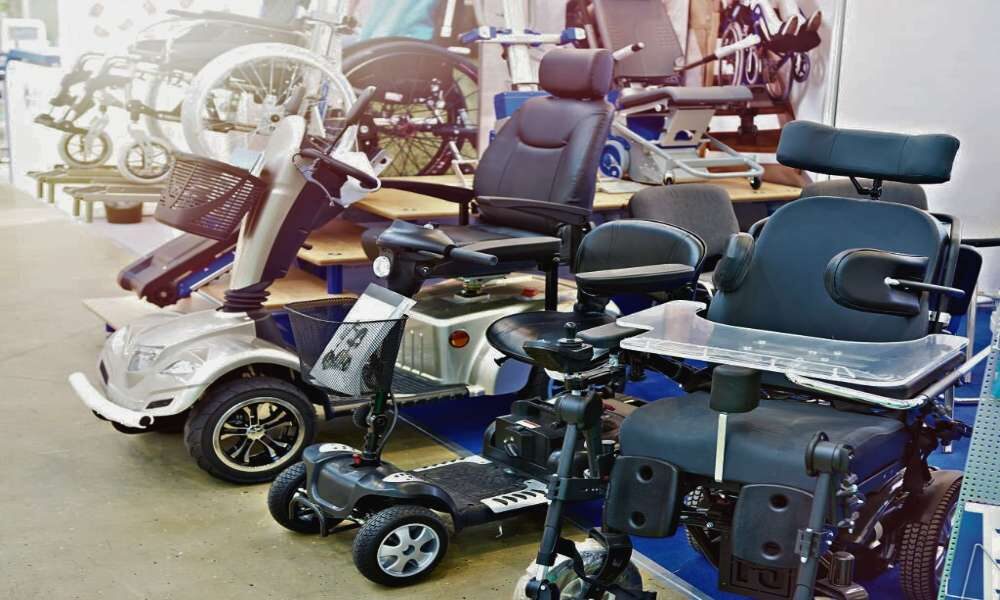There are numerous areas where people who use mobility equipment find frustration. One area that comes to mind is the tips and tricks for making mobility equipment more usable. Mobility and accessibility equipment can help you regain freedom and independence following an injury, disease, or disability. However, this mobility and accessibility equipment isn’t always very user-friendly. To help you navigate mobility equipment more easily and make it more usable, here are seven tips on how to make mobility equipment more usable.
Make Sure It’s Lightweight
The very first thing that you should do is ensure your mobility equipment is lightweight. You want something manageable because it will limit your ability to move freely without straining yourself. The best way to determine if your product is appropriate for your needs is by checking its weight specifications before buying it. You should also ensure that each piece of mobility equipment has its carrying case or bag so you can easily transport them from place to place when needed. This allows you to move around freely without worrying about carrying bulky items all day!
Add a Drink Holder
One of the biggest complaints about wheelchairs is that they don’t have drink holders. It’s hard to find one that does have one built in. But there are many options available from third-party manufacturers if the wheelchair manufacturer doesn’t offer one. You’ll also find drink holders available for walkers, scooters, and wheelchairs. These are great for keeping your drink close at hand while out on the town with friends or heading out for a night on the town with family and loved ones.
Get the Right Size
If you’re in the market for mobility equipment, start by ensuring you get the right size. This is especially very important if you’re buying a wheelchair or scooter because a smaller or larger chair can make it harder to manage your condition. For instance, if you’re getting out of bed after surgery and need a wheelchair, you want something lightweight and easy to manage. But if you need something more permanent, you might want a larger chair with armrests so it feels like something other than such an effort to get up and down.
Use the Wheelchair As the Manufacturer Intended
The manufacturer intends for you to use the wheelchair as designed. They have designed it for certain types of terrain and activities, so if you decide to use it, make sure to follow their recommendations. Make sure you inflate your tires correctly and ensure they have enough tread to grip the surface. If you use your chair indoors on carpet or smooth floors. Ensure that they are not too thick.
Keep the Mobility Equipment Clean
Keeping your mobility equipment clean is vital for yourself and those around you. Helping someone who uses a wheelchair or another mobility device to keep their equipment clean shows them respect and care. Before using any mobility device, ensure it is appropriately cleaned. Wipe down surfaces with soap, water, or a suitable cleaning solution to eliminate germs. Leftover germs on the equipment could potentially cause infections for others who use it later, especially after it has been sat in for several hours.
Protect Your Wheelchair From Water
If you live in a location with a lot of rain, you might want to invest in rain covers for your wheelchair. These will protect it from getting wet when it rains and help prevent any damage from occurring. You can also use these covers when you are traveling in the car or on public transportation so that your chair is protected if there is a sudden downpour while you are away from home.
Find the Right Accessories
Accessories make it easier for people with disabilities to get around and live their lives. For example, if you have a walker or wheelchair, you might use one accessory more than others: wheel covers protect your wheels from getting dirty or damaged in inclement weather. If you have an electric wheelchair, a charger is essential for keeping your battery charged and ready to go. Other accessories include seat cushions and footrests so users can be comfortable using their mobility products.
Conclusion
Implementing the 7 tips to enhance the usable of mobility equipment can significantly improve the overall experience for individuals with mobility challenges. By optimizing comfort, accessibility, and functionality, users can enjoy greater independence and freedom in their daily lives. Whether it’s making simple adjustments or investing in innovative features, these tips offer practical solutions to maximize the usability of mobility equipment and empower individuals to navigate the world with greater ease and confidence. With a focus on user needs and continuous improvement, we can create a more inclusive and accessible environment for all.




